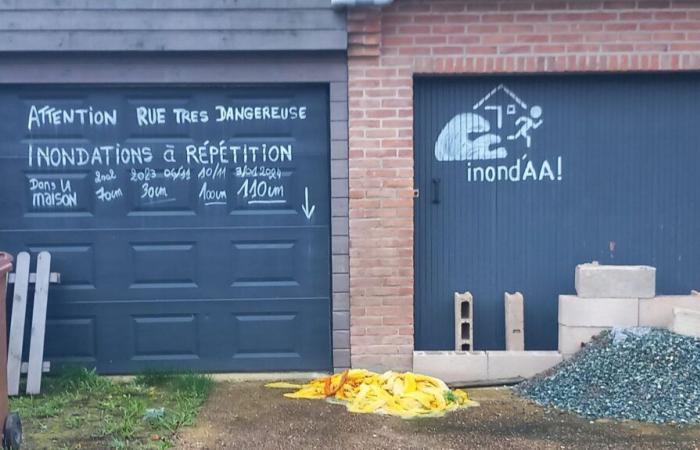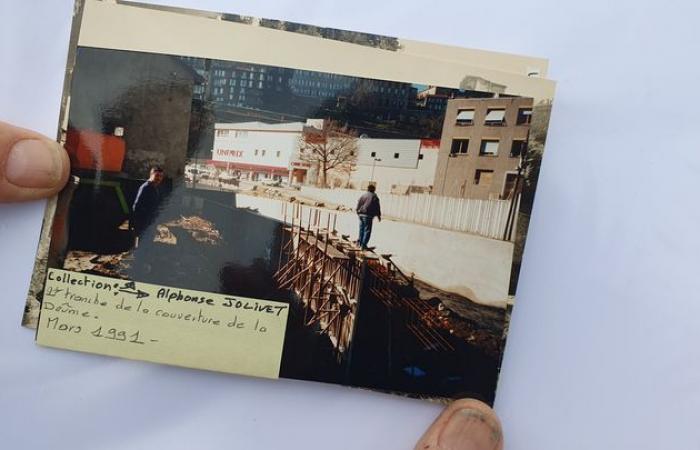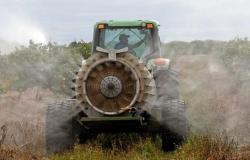Cross-references on the floods which affected France, a year ago in Pas-de-Calais, and a month in Ardèche. Two places where residents and elected officials are asking themselves the question of land use planning and how to envisage the future, when these bad weather conditions are likely to recur.
In Pas-de-Calais, it all started in November 2023 with torrential rains, flooded rivers, the Liane, the Canche, the Lys, the Hem and the Aa, with 200 municipalities and thousands of families affected. Some will be again in December, then again in January 2024, after new rains on waterlogged lands.
A year later, we are preparing, in Blendecques as in Arques, two of the most affected municipalities, to redesign part of the city to mitigate future floods of the Aa. This requires drastic measures: destruction of houses, including two entire streets. In all, 70 houses are doomed to disappear, impossible to repair or protect. They will give way to flood extension zones (ZEC), in other words a no man's land where the water can spread and thus spare the other districts of the cities concerned.
Among these buildings destined to be razed, Christelle's business and home. She has just received her buyout offer. “It relieves me, because it’s a building that’s no longer worth anything on resale, and now they’re taking it back to the value before the flood, she explains. I want to leave. We are no longer peaceful as soon as it rains a little. We don't want to be psychotic all the time, but we always think about it, it comes back.”
Coralie will also say yes to the buyout proposal, but it is not with joy of heart that she will leave her pretty 18th century house.e century on the banks of the Aa. “It’s very difficult to accept because we really fell in love with this house, she reminds. You can't imagine how much we've done in there. We had a lot of expansion projects, and today we have a wall that is crumbling and falling, we have humidity in the cupboards. So we know that even if we hadn't made the decision to leave here, we would have had big problems afterwards.”
Not everyone, however, agrees. Christian, for example, does not want to leave the house he inherited from his parents, even though there was up to 1.40 meters of water. And he is not alone in his fight. “Number 30 [de la rue] does not sell, the 28 does not sell, the 26 and the 12 neither. Maybe one day we will be told: 'You are expropriated'. He says he's not afraid. “I know the area, this time it was really exceptional.”
“I will fight to the end to end my life in my house.”
Christian, disaster resident in Pas-de-Calaisat franceinfo
Recalcitrants that the president of the Saint-Omer agglomeration, Joël Duquenoy, is trying to convince. “When he sees that the neighbors are selling, he will find himself alone, and the house worth 200 000 euros. When we have determined the flood zones, it will be worth 50,000 euros.”
Before possibly going through a declaration of public utility and expropriations, but which obviously risk delaying the demolitions.
In Annonay, in Ardèche, many questions also arise, one month after the bad weather, because when we talk about fighting floods, we often talk about de-waterproofing the soil. Except that in Annonay, it seems very complicated because the town center is built on a river: the Deûme was covered in the 60s to make room for cars. “You can compare it to a tunnel, they put up walls on each side and they covered the whole thing, says Alphonse, a resident, who remembers it very well. If there is a tree or two that gets in the way, even just high up, it quickly creates a barrier, and that’s worse than the beavers!”

And that's what happened: trees blocking the entrance to this tunnel and a river overflowing. But there is no question of calling this work into question. “Some criticize the coverage of La Deûme, but not me, Alphonse slices. Crossing the city is on Avenue de l'Europe, the shops are located on this avenue. The streets were previously so narrow, we would not have been able to move around properly. If it hadn't been for the trees, things were going very well, the cover of the Deûme. The trees along the river, I think that’s heresy.”
And despite the damage, there's no question of leaving the city center for Eddy either. On October 17, he saw a wave arrive at his real estate agency, which is still closed. “We would never have imagined such a wave, never, he concedes. I was asked the question: 'Are you going to stay here?' The question does not arise. Yes, we are going to stay here because the city has to live too. We know that we forget this river, so maybe now we will remember it a little more.” Especially since this flood could happen again. “The last time was a hundred years ago, I won’t be here to see it.”
“If we choose the option of discovering the Deûme, it is a complete upheaval of the city, we must rethink it in its entirety.”
Simon Plenet, mayor of Annonayat franceinfo
Hydraulic studies will be carried out to understand the scenario of these floods. “Perhaps in the shorter term, there is the question of how to limit the vulnerability of the city center to protect certain businesses, explains the mayor. There are also exercises, raising awareness of the fact that we are in a flood-prone area.”
Some buildings will be demolished, notably the one which houses the Secours populaire, built in the bed of the river.







